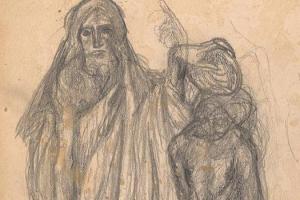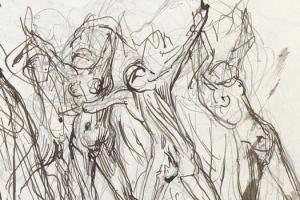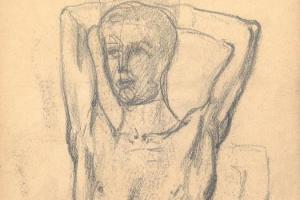Sketchbook overview
At present, there are five sketchbooks known to be from George Minne. The oldest, dating from between circa 1883 and 1888, is found in the Albertina in Vienna, and presumably belonged to the Fritz Waerndorfer collection. The four remaining sketchbooks were acquired by the Museum of Fine Arts in Ghent in 1982. To date, these sketchbooks have hardly been studied. For a number of sketches that clearly form the inspiration for well-known sculptures, the dating has been carried out, and on the basis of that we can situate the first three in the years of 1891-1898, and the fourth dates from the period of 1900-1910.
Minne's sketchbooks provide an insight into the manner in which the artist investigated various possibilities, already as drawings, in order to arrive at the ultimate concept of an image or sculpture group. In these ‘studies' we see his preference for certain motifs already returning: kneeling, naked, straddling male figures, grieving. Some sketch pages show studies that approach the final images, while others are freer drawings that have never lead to a sculptural result.
The powerful and sometimes aggressive drawing style is noteworthy as is the obsessive searching for the most expressive gestures and attitudes. We see this, for example, in his preparatory sketches for the Man with a Waterskin and for Solidarity. At the same time, we find in all of the sketchbooks studies in which Minne renders the contours of a figure with a few delicately executed lines, such as, for example, the Little Figure Kneeling. Sometimes Minne departs from a freely realistic representation of the human body, though for the most part his figures are rather stylised. Here and there we also find sketches of architectural elements.
Helke Lauwaert










